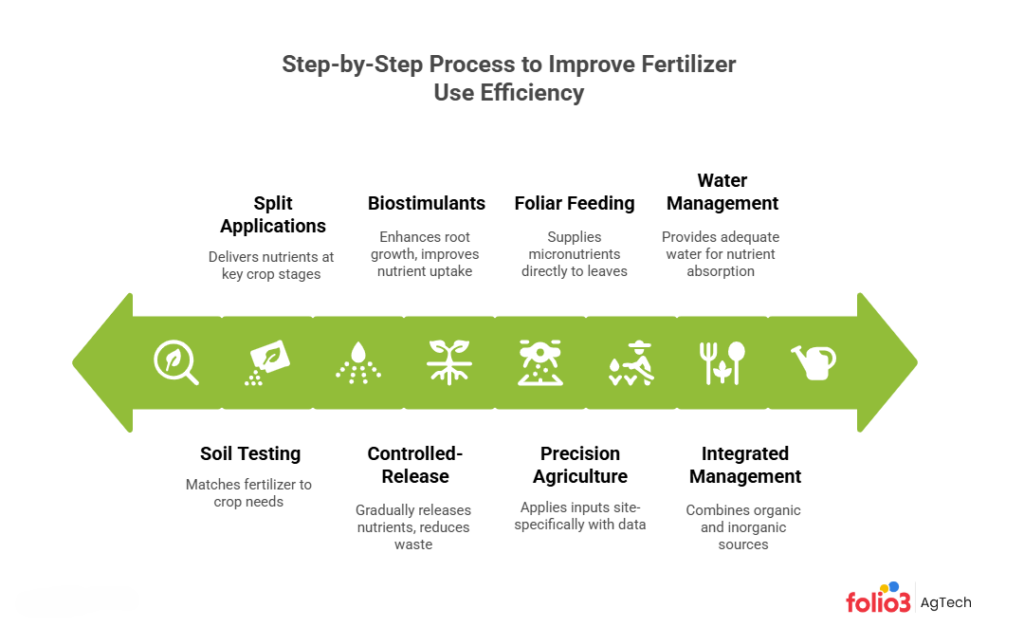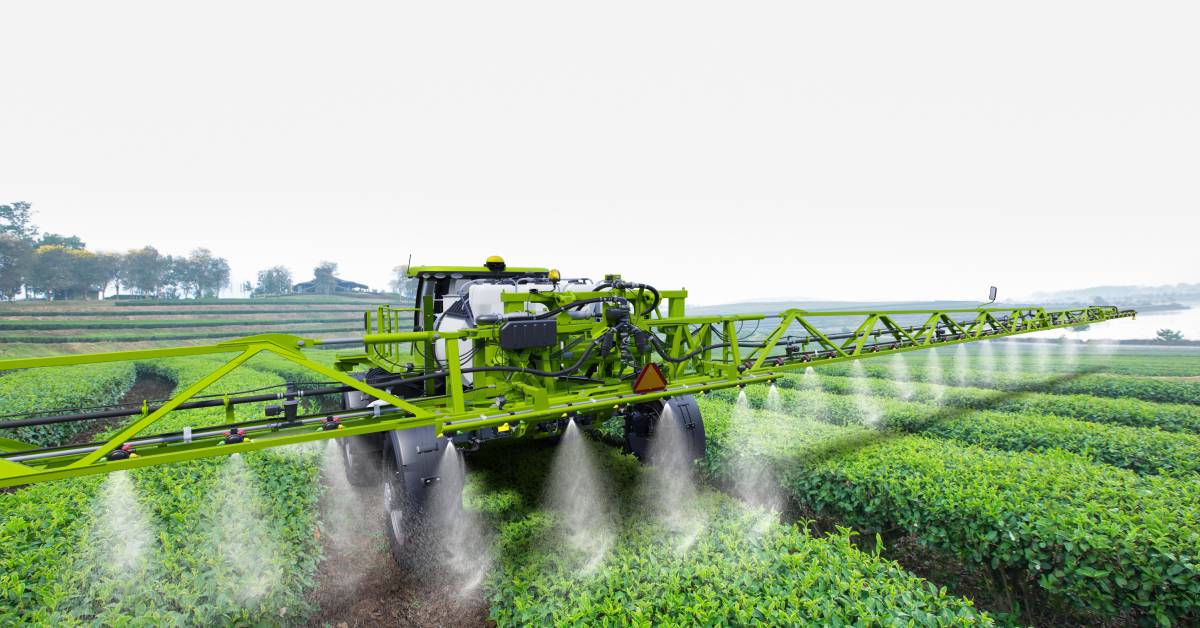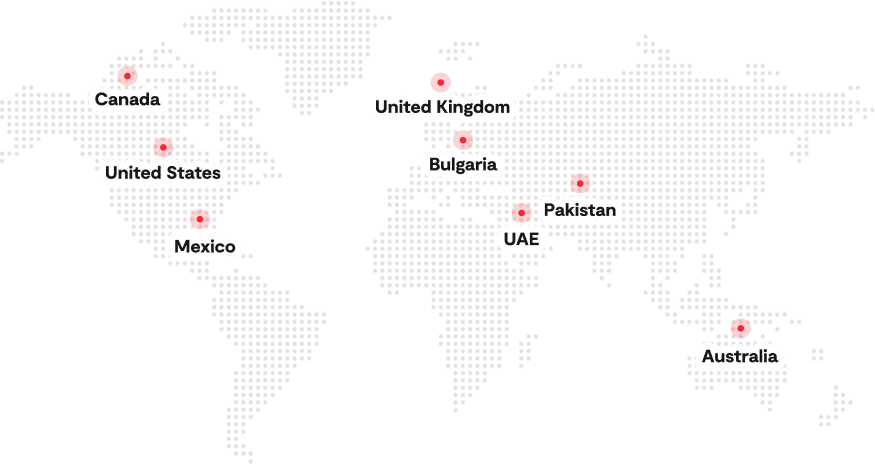Fertilizer costs have skyrocketed in recent years. As per stats, prices surged by 80% in 2021 alone, leaving many farmers struggling with high input expenses. At the same time, inefficient fertilizer use means much of what is applied never benefits the crop.
In fact, an estimated 40–80% of fertilizer applied globally is lost to the environment rather than taken up by plants. This not only wastes money but also causes problems like nutrient runoff polluting water and emitting greenhouse gases.
As a farmer or agronomist, you face the challenge of boosting crop yields affordably without causing ecological harm. That’s where fertilizer efficiency comes in. By maximizing fertilizer use efficiency, applying the right amount in the right way so crops absorb most of it, you can improve yields while cutting waste.
In this blog, we’ll take a deep dive into fertilizer efficiency, discuss its importance and the factors that affect it, and then explore practical strategies to improve it. We’ll also look at the benefits of efficient fertilizer use, the challenges in achieving it, and how modern technology can help with fertilizer management and sustainability.
What is Fertilizer Efficiency?
Fertilizer efficiency refers to how effectively plants utilize the nutrients you apply. In simple terms, it’s the ability to apply the optimal amount of fertilizer to achieve maximum crop yield with minimal waste. Experts measure this concept as fertilizer use efficiency (FUE), the proportion of fertilizer nutrients that actually contribute to plant growth and yield.
For example, if you apply 100 kg of nitrogen but the crop only absorbs 50 kg, the FUE is 50%. Unfortunately, current FUE for many nutrients is relatively low; globally, crops recover only about 40–65% of applied nitrogen, 15–25% of phosphorus, and 30–50% of potassium on average. The rest is lost to leaching, runoff, or gets tied up in soil, meaning a lot of fertilizer never benefits your plants.
Difference Between Nutrient Use Efficiency & Fertilizer Efficiency
You might also hear the term nutrient use efficiency (NUE). NUE is closely related but defined slightly differently. It often means the yield or biomass produced per unit of nutrient applied (or the percentage of applied nutrient recovered by the crop). In other words, NUE looks at the outcome (crop growth) relative to nutrient input, whereas fertilizer efficiency or FUE focuses on the fate of the fertilizer itself.
Both concepts are essential for sustainable agriculture: you want a high fraction of your fertilizer to be taken up (high FUE), and you want a lot of crop output per unit of nutrient (high NUE). When fertilizer use efficiency is low (for instance, nitrogen FUE <50%), it means nutrients are being wasted and can cause environmental harm without boosting yields. So, improving these efficiencies – getting more crop per pound of fertilizer is key to sustainable farming.
Factors Affecting Fertilizer Use Efficiency
Achieving high fertilizer efficiency isn’t just about how much fertilizer you dump on the field. It’s the result of a complex interaction between plant genetics, management practices, and the environment. Here are some significant factors affecting fertilizer use efficiency:

Soil properties
Soil pH, texture, and organic matter strongly affect fertilizer efficiency. Acidic soils limit phosphorus, while alkaline soils restrict micronutrients. Sandy soils lose nutrients quickly, whereas clay may trap them or cause denitrification if waterlogged. Proper management, like liming acidic soils, maintains balanced conditions that keep nutrients available and accessible to plant roots for better uptake.
Soil biology
A healthy soil ecosystem helps convert and transport nutrients to plants. Beneficial microorganisms (like mycorrhizal fungi and nitrogen-fixing bacteria) improve nutrient cycling and uptake. For instance, mycorrhizal fungi extend the root network and can greatly enhance phosphorus absorption by crops. If your soil biology is depleted, fertilizer efficiency drops because fewer microbes are there to help make nutrients plant-available.
Climate and weather
Weather conditions during the growing season play a significant role in nutrient use. Temperature and rainfall affect both plant growth and nutrient loss. Heavy rains can cause leaching or runoff of nutrients before plants get to use them. On the other hand, drought reduces nutrient uptake because, without moisture, roots can’t absorb nutrients effectively. Extreme weather events or an ill-timed downpour can wash away recently applied fertilizer, lowering efficiency.
Water management
Related to climate is your irrigation and drainage strategy. Adequate soil moisture is essential for nutrient uptake; nutrients move into plants primarily via water. If your field is too dry, nutrients stay in the soil out of the plant’s reach; if it’s over-irrigated or waterlogged, nutrients may leach down or run off. Efficient irrigation ensures nutrients are dissolved in soil water for roots to absorb, without excess water causing nutrient loss.
Fertilizer type and application method
Not all fertilizers or application methods are created equal in terms of efficiency. The chemical form of a nutrient and how you apply it determine how much is available to plants versus lost. For example, placing fertilizer in bands near the root zone or using localized deep placement can increase uptake efficiency compared to broadcasting on the surface. Similarly, using a controlled-release fertilizer (CRF) that releases nutrients gradually can better match crop uptake and reduce losses. Research shows that using controlled-release or stabilized fertilizers can allow you to decrease total fertilizer use by 20–30% without hurting yields.
Crop genetics and cropping systems
Different varieties vary in nutrient use efficiency (NUE). Modern hybrids with stronger root systems or improved metabolism produce more yield per unit of nutrient. Cropping systems also matter: legumes naturally add nitrogen, while deep-rooted cover crops capture and recycle leftover nutrients. Even within a single field, hybrids differ in uptake efficiency. Choosing nutrient-efficient varieties and adopting rotations, intercropping, or cover cropping greatly enhances fertilizer use efficiency.
Benefits of Improved Fertilizer Efficiency
Why put in all this effort to optimize fertilizer use? Because the payoffs are real, to improve farm efficiency. When you improve your fertilizer use efficiency, you unlock multiple benefits:
Higher yields with less input
Your crops get nutrients when they need them, reducing stress and boosting productivity. Many farmers see equal or higher yields with fewer bags of fertilizer. Studies show precision nitrogen management raised production by ~4%, while integrated nutrient management improved yields by 10–20%. Over time, as your soil health improves, your yields also stabilize against nutrient imbalances.
Lower costs, better margins
Fertilizer is often 20% of farm cash costs. Using it more efficiently means spending less and getting more out of every dollar. Switching to fertigation, for instance, has cut fertilizer use by 20% without yield loss. Soil testing, variable-rate application, and efficiency products all reduce waste while shielding you from volatile global fertilizer markets. Better nutrient balance also improves crop quality, which can mean stronger market prices.
Reduced environmental impact
Inefficient fertilizer use drives runoff, water pollution, and greenhouse gas emissions. Today, nearly 500 coastal dead zones worldwide are linked to nutrient pollution. By keeping nutrients in your fields, you protect waterways and cut emissions. Enhanced efficiency fertilizers, for example, can reduce nitrous oxide by up to 80%. Farming efficiently puts you ahead of regulatory pressures while aligning with sustainability goals.
Healthier soils, long-term sustainability
Over-fertilizing degrades soil structure, pH, and microbial life. By applying balanced nutrients, incorporating organic sources, and avoiding excess nitrates, you improve soil fertility. Healthy soils absorb and use fertilizers more effectively, creating a cycle of productivity for years to come.
Stronger resilience and resource management
Efficient farms are less dependent on chemical inputs and supply chain swings. Optimized fertilizer use simplifies storage and logistics, while also opening doors to eco-labels, carbon credits, and sustainability-focused buyers. In short, efficiency makes your farm more competitive, resilient, and future-ready.
How to Improve Fertilizer Use Efficiency? Step-by-Step Process
Improving fertilizer efficiency may sound technical, but it boils down to a simple principle: help your crops get more out of every pound of fertilizer you apply. Below are practical strategies, from basic agronomy to high-tech solutions, to improve fertilizer use efficiency on your farm:

1. Soil Testing and Balanced Nutrition
Regular soil testing reveals nutrient levels and pH so you can match fertilizer applications to actual crop needs. For that purpose, precision fertilization for crop growth is essential if one nutrient is lacking, others won’t be fully utilized. For example, low potassium limits the effectiveness of added nitrogen. Soil tests act as a roadmap, helping you apply the right rate while avoiding costly overuse or imbalances. Correcting pH (ideally 6.0–7.0) improves nutrient availability. This modest investment saves money and boosts yields by addressing true deficiencies.
2. Right Timing and Split Applications
Fertilizer efficiency improves when nutrients are applied in smaller doses at key crop stages instead of all at once. Crops absorb nutrients gradually, so splitting reduces losses and boosts uptake. Farmers often apply some at planting and another dose at tillering or flowering. In the case of rice, three split applications raised yields by 30% and improved nitrogen use efficiency. Many 4R Nutrient Stewardship programs (Right Source, Right Rate, Right Time, Right Place) emphasize timing as a key lever for efficiency. This spoon-feeding approach avoids waste and ensures nutrients match crop demand.
3. Use Controlled-Release Fertilizers and Stabilizers
Controlled-release fertilizers (CRFs) release nutrients gradually, aligning with crop demand and reducing waste. Stabilizers like urease inhibitors (e.g., NBPT) slow ammonia loss, while nitrification inhibitors (e.g., DCD, nitrapyrin) cut nitrate leaching by nearly 48% and lower nitrous oxide emissions. These enhanced efficiency fertilizers keep more nitrogen in plant-available form, improving nutrient use efficiency. Though pricier per unit, they often pay off by allowing 20–30% less fertilizer use and minimizing environmental impact, especially in sandy or wet soils.
4. Biostimulants and Soil Conditioners
Beyond NPK fertilizers, biostimulants like seaweed extracts, humic acids, microbial inoculants, and amino acids enhance root growth, enzyme activity, and soil biology, improving nutrient uptake. They also help crops cope with stress (drought, salinity), protecting nutrient absorption. Similarly, polymer soil conditioners or hydrogels improve the soil’s water and nutrient retention, reducing leaching. While results vary, these additives act as valuable complements, especially in degraded soils or high-yield systems. Plus, they help you get more from applied fertilizers without replacing balanced nutrient plans.
5. Precision Agriculture and Digital Tools
Precision agriculture improves fertilizer use efficiency by applying inputs site-specifically with data and technology. Tools like GPS-guided applicators, soil sensors, NDVI drones, and yield mapping enable variable-rate technology (VRT), which applies more fertilizer where needed and less where it isn’t. This fine-tuning prevents over- and under-fertilization. U.S. studies show a 7% efficiency gain from precision nutrient management. Even GPS auto-steer prevents overlap, while digital tools recommend rates using soil, crop, and weather data, reducing guesswork and waste.
6. Foliar Feeding and Fertigation
Foliar feeding supplies micronutrients directly to leaves, bypassing soil losses and quickly correcting deficiencies (e.g., iron, zinc, or potassium during fruit filling). While it can’t meet bulk NPK needs, it’s an effective supplement. Fertigation, where fertilizer is delivered through drip or sprinkler irrigation, spoon-feeds nutrients throughout the season with precise control. This places nutrients in the root zone, reduces leaching, saves labor, and achieves high nutrient use efficiency. Many high-value fruit and vegetable farms rely on fertigation for better yields and input savings.
7. Organic and Integrated Nutrient Management
Integrated nutrient management (INM) combines organic sources like manure, compost, cover crops, and residues with inorganic fertilizers to sustainably boost fertilizer efficiency. Organics improve soil structure, moisture, and microbial activity, making applied nutrients more effective while providing slow-release nutrition. Studies show INM often delivers better yields than either source alone, sometimes raising productivity by up to 50%. Adding legumes supplies natural nitrogen, reducing chemical dependence. Over time, INM builds soil fertility, lowers costs, and steadily improves nutrient use efficiency.
8. Water Management & Irrigation Efficiency
Efficient irrigation is vital for fertilizer efficiency. Provide crops with enough water to absorb nutrients, but avoid excess that causes runoff or leaching. Techniques like drip or sprinkler irrigation, paired with scheduling or soil sensors, enhance both water and nutrient use efficiency. Drip systems, for example, cut water use by ~20% and fertilizer input by 20%+ without yield loss. Mulching, conservation tillage, and good drainage also prevent nutrient losses. Ultimately, effective water management ensures steady nutrient uptake and healthier crops.
Challenges in Achieving Fertilizer Efficiency
With all the benefits, you might ask: why isn’t everyone already maximizing fertilizer use efficiency? The truth is, farmers face several barriers in fertilizer use efficiency and management.
Technology and knowledge gaps: Tools like precision ag, soil mapping, or controlled-release fertilizers can improve efficiency, but they’re often costly or complex. Small-scale farmers especially struggle with adoption because of high upfront expenses or limited training. Without strong extension services, many simply don’t know where to start.
Economic constraints: While efficient practices save money long-term, they often require short-term investment. Fertigation systems or enhanced-efficiency products cost more upfront, and thin margins make farmers hesitant. In regions with subsidies, cheap fertilizers sometimes encourage overuse, while in poorer areas, high prices lead to severe underuse—both reducing efficiency.
Soil health issues: Years of overuse or poor management leave soils compacted, acidic, or nutrient-depleted. Even when fertilizers are correctly applied, these soils can’t hold or transfer nutrients well, making results disappointing until soil rehabilitation happens.
Climate variability: Droughts, floods, or erratic rains often disrupt carefully planned fertilizer schedules. Without access to adaptive strategies or insurance, many farmers fall back on inefficient “just in case” applications.
Logistics and distribution: Even if you plan to split applications, inefficiencies creep in when suppliers run out of product or delivery is delayed. Weak distribution systems and poor infrastructure, classic DRP challenges, make consistent, efficient fertilization difficult.
How Technology and ERP Drive Fertilizer Efficiency
Modern tools like agriculture ERP systems, IoT, and AI are transforming how you manage fertilizer efficiency. Instead of guesswork, these platforms let you plan, track, and adjust nutrient use with precision.
Nutrient tracking and planning: An ERP works as your central hub, recording every fertilizer application and linking it to soil tests, crop stage, and yield outcomes. This way, you can spot patterns like fields that perform well with less nitrogen and fine-tune rates to cut waste without hurting yield.
Real-time insights: When ERP integrates with IoT soil sensors or satellite imagery, you get live data on soil moisture and crop health. If a field shows low growth or excess nitrate, the system can alert you to delay fertigation or apply a foliar feed only where needed. This ensures fertilizer goes exactly where and when it’s required.
AI and predictive analytics: Advanced systems can forecast nutrient needs by analyzing weather, soil, and crop data. Fertilizer companies and large farms are already using AI-driven models to forecast fertilizer demand and optimize inventory, which can trickle down to individual farm advice.
Compliance and sustainability: ERPs also simplify regulatory reporting and track your carbon footprint. By logging reduced fertilizer rates or enhanced efficiency fertilizers, you can align with ESG goals, prove sustainable practices, and even qualify for carbon credit programs.
Conclusion
The key takeaway is simple: improving fertilizer efficiency is a win-win. You grow more with every unit of fertilizer while cutting waste and adverse side effects. Even small steps like boosting nutrient uptake by a few percent or reducing rates slightly over time.
You don’t need to overhaul everything at once. Start small: run a soil test, try a split application, or test a nitrification inhibitor on one field. Track results, even with a basic log or app, to build your own efficiency baseline. Lean on local agronomists or extension services for region-specific guidance, and check for cost-share programs that can offset adoption costs. Technology can make this journey easier. Farm management tools or agriculture ERP systems that include fertilizer planning and tracking features help you stick to best practices. Don’t hesitate to get in touch with Agtech providers or consultants to see a demo of how an agriculture ERP could work for you.
FAQs
What is High Efficiency Fertilizer?
High-efficiency fertilizers, often called enhanced efficiency fertilizers (EEFs), are specially designed to make sure your crops get the most out of every application. They either release nutrients slowly over time or block chemical reactions that cause nutrients to get lost in the soil or air. The result? Your plants get a steady supply of nutrition, while you reduce waste and protect the environment.
How does Fertilizer Efficiency Contribute to Sustainable Farming?
When your fertilizer is used efficiently, more of it goes into the crop and less is lost to runoff, pollution, or greenhouse gas emissions. That means healthier plants, cleaner water, and fewer wasted resources. Over time, this approach also builds soil health, helping you maintain strong yields while keeping your farm productive and environmentally responsible.
What is the Most Efficient Fertilizer?
There isn’t a single “best” fertilizer; it depends on your soil and crop needs. That said, compost is often considered one of the most efficient because it improves soil structure, adds nutrients, and releases them gradually. For specific nutrient gaps, you can use balanced formulas like 10-10-10 or more targeted blends, but always base your choice on a soil test so you’re only applying what your crops truly need.
What are the Signs of Over-Fertilizing?
If you’ve applied too much fertilizer, your plants will usually tell you. Look for scorched or yellow leaf tips, white crusts of salt on the soil, stunted growth, wilting despite adequate watering, or even blackened roots. On lawns, patches may turn brown or yellow. For potted plants, salty buildup on the soil surface is another giveaway.
How Can ERP Software Help Track and Optimize Fertilizer Usage?
An agriculture ERP system acts like your digital farm notebook, only smarter. It tracks every fertilizer application, pulls in data from soil tests or sensors, and analyzes trends. Instead of reacting after problems appear, you get real-time insights and predictive recommendations. That means applying the right fertilizer, in the right place, at the right time, while cutting costs and proving your farm’s sustainability performance.




